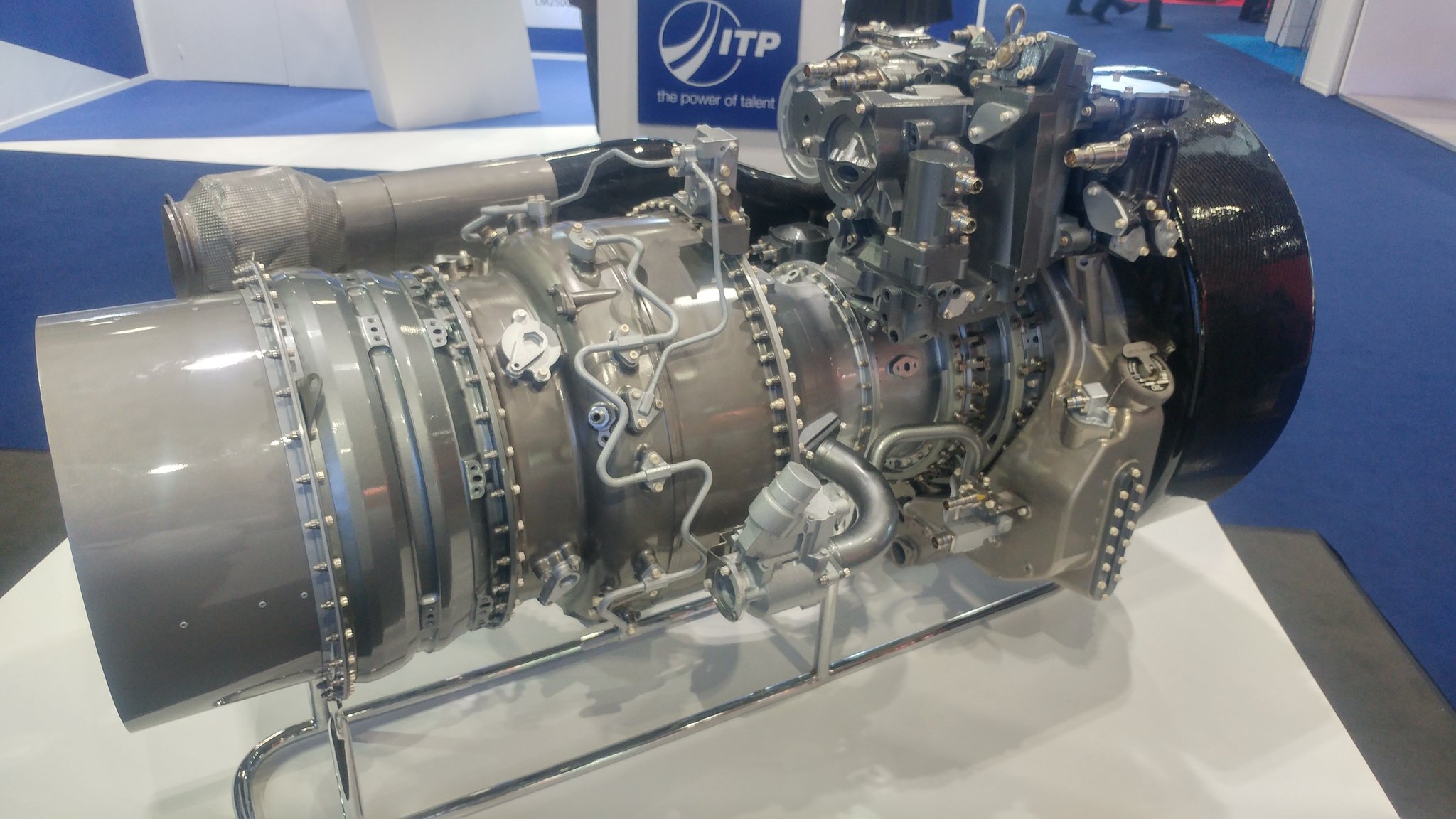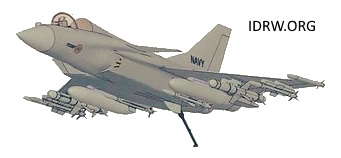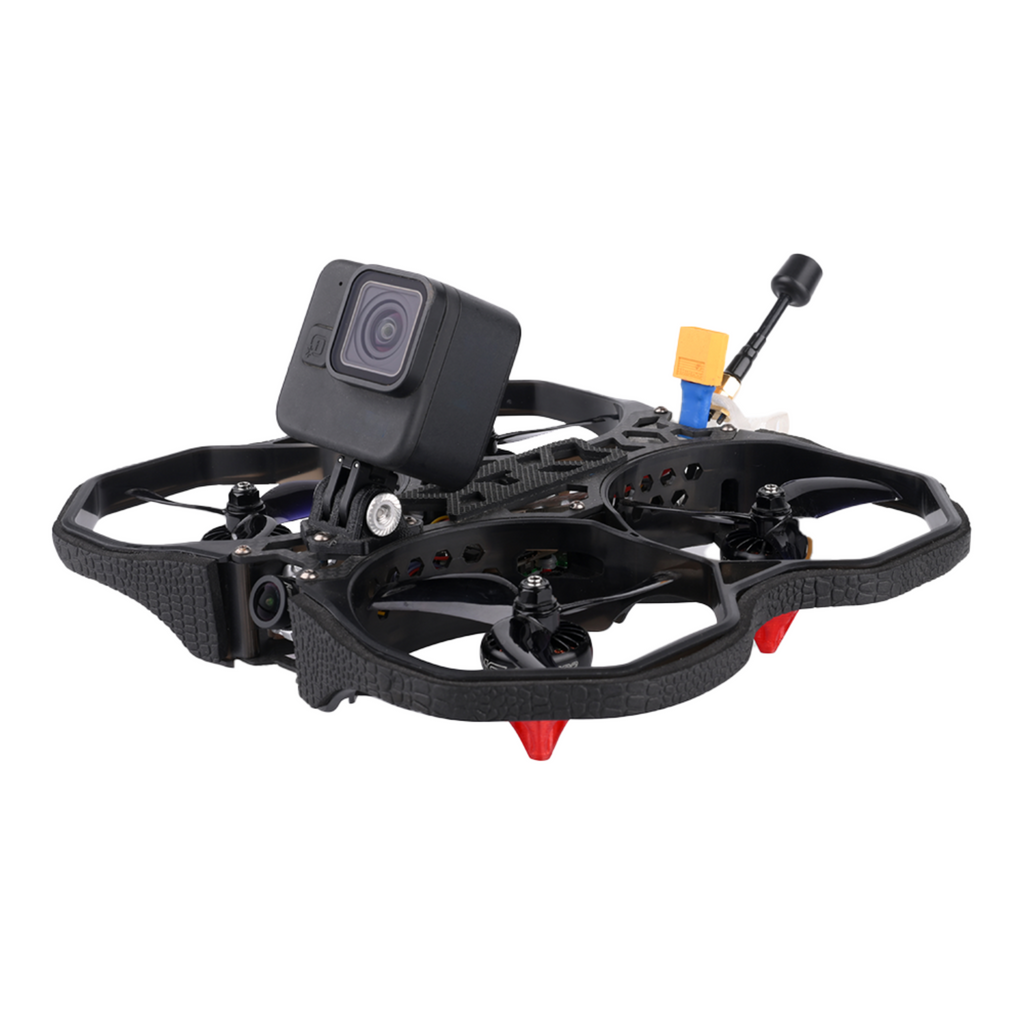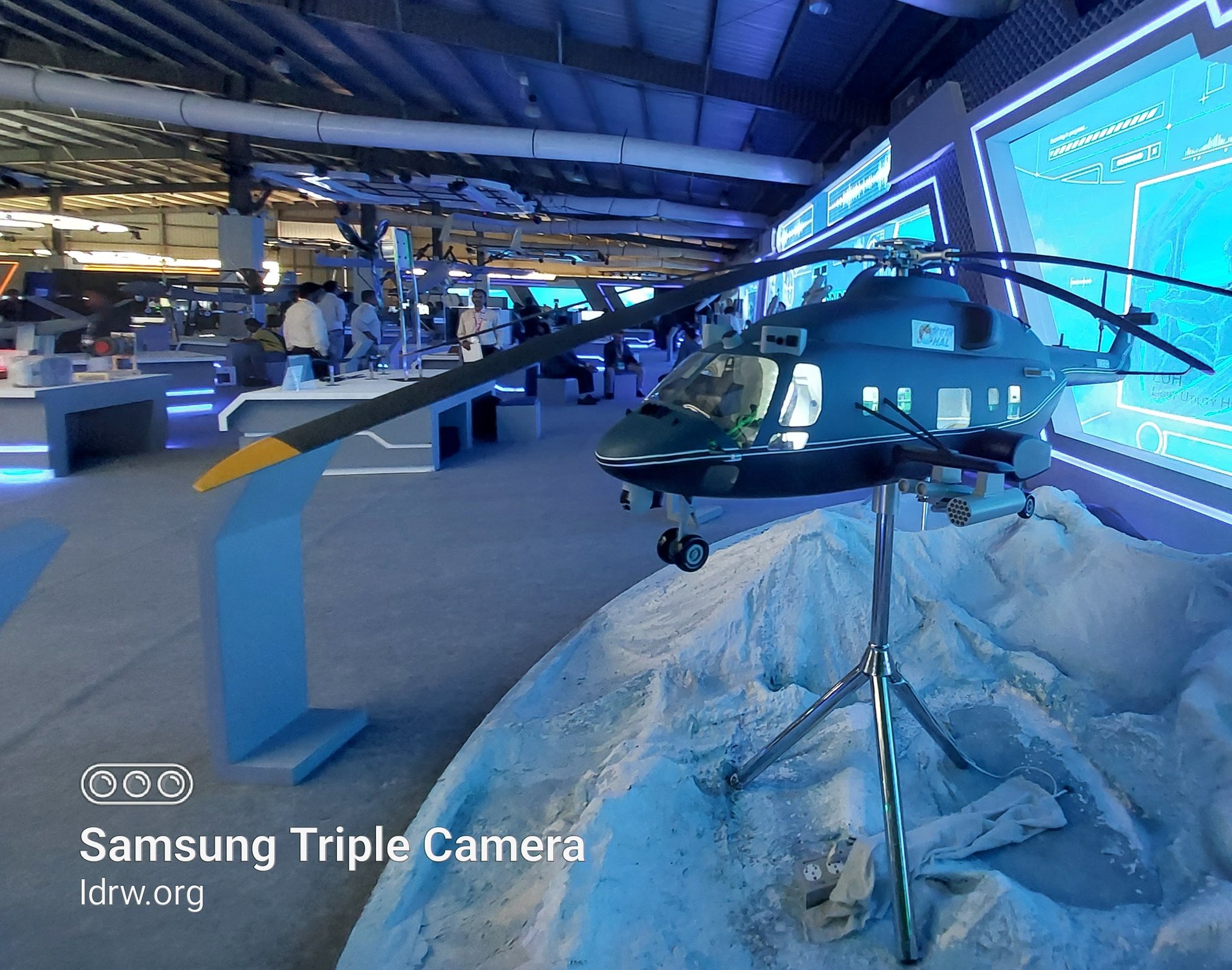SOURCE: RAUNAK KUNDE / NEWS BEAT / IDRW.ORG

Recent reports suggesting a collaboration between India and Russia for local manufacturing of Su-30MKI/SM aircraft for export raise doubts about its viability. While this could potentially help Russia circumvent export sanctions due to their banking system, several factors make it a commercially unappealing proposition.
Analysts at idrw.org believe Indian-built Su-30MKIs will struggle to compete with their Russian counterparts due to a significant cost difference.
Continue readingSOURCE: RAUNAK KUNDE / NEWS BEAT / IDRW.ORG

The Indian Air Force (IAF) is gearing up for flight trials of the TARA (Tactical Advanced Range Augmentation) precision guidance kit, a significant development by DRDO (Defence Research and Development Organisation). The ADM& SPJ division of AIRPPNCSS Group within ARDE (Armament Research and Development Establishment) has formally requested flight test support from Hindustan Aeronautics Limited (HAL) on Su-30 MKI aircraft.
TARA represents a major leap forward in the IAF’s air-to-ground weaponry. This indigenous guidance kit transforms unguided bombs into smart munitions, significantly enhancing their accuracy and effectiveness.
Continue readingSOURCE: RAUNAK KUNDE / NEWS BEAT / IDRW.ORG

Hindustan Aeronautics Limited (HAL), India’s premier aeronautical manufacturer, has announced a significant collaboration with Safran Helicopter Engines. This partnership will focus on the development and integration of a new, indigenous engine for the Indian Multi-Role Helicopter (IMRH) program.
HAL will initially utilize Safran’s ANETO-1H engine for the IMRH’s development and testing phases on the Intermediate Multi-Role Helicopter (IMRH) and Deck Based Multi-Role Helicopter (DBMRH) variants. The ANETO-1H, currently used on the AW189 helicopter with a power range of 2500shp, will provide a reliable platform for these crucial initial stages. RWRDC (Rotary Wing Research and Development Centre) will acquire a total of 12 ANETO-1H engines, with deliveries expected within 24 months of contract finalization.
Continue readingSOURCE: AFI

The TEDBF (Twin Engine Deck Based Fighter) program, a critical component of India’s indigenous defense manufacturing initiative, represents a significant step forward in strengthening the nation’s aerospace capabilities. A pivotal decision facing this program is the choice of the engine. Advocating for the 80kN Kaveri engine over the foreign F-414 engine is not just about fostering self-reliance; it also presents a strategic and operationally sound choice. Comparing the Kaveri engine to the Rafale M’s M-88 engine further highlights its potential benefits.
The Kaveri engine, an indigenous project by the Gas Turbine Research Establishment (GTRE) of India, offers a thrust of 80kN. Its integration into the TEDBF would mark a significant milestone in India’s journey towards defense self-reliance. Currently, the Kaveri engine is approaching technological maturity, and its inclusion in a high-profile project like the TEDBF would provide the necessary impetus for its final development stages, ensuring it enters production.
Continue readingSOURCE: AFI

In a groundbreaking development that underscores India’s burgeoning defense capabilities, a Surat-based startup, Inside FPV, has clinched a pivotal deal with an Israeli defense contractor. The agreement involves the supply of a lethal drone, aptly named Defence Drones to the Israeli military. This strategic partnership marks a significant milestone for the city, often recognized as India’s diamond hub, as it catapults into the global defense arena.
Founded in 2020 by a trio of entrepreneurs – Arth Chowdhary, Deyvant Bhardwaj, and Oshi Kumari – Inside FPV has rapidly gained traction with its innovative approach to drone technology. The startup’s flagship product is a user-friendly “plug-and-fly” unmanned aerial vehicle (UAV) that outperforms competitors in terms of ease of operation. Besides manufacturing drones, the company also offers a robust online platform for drone parts and accessories.
Continue readingSOURCE: AFI

The Surya Command of the Indian Army recently unveiled an impressive array of advanced loitering munitions and robotic systems, highlighting the increasing integration of cutting-edge technology in modern warfare. The showcase included state-of-the-art drones, robotic mules, and quadrupeds, all designed to enhance the operational capabilities of the Indian Armed Forces.
Here are the key systems presented as per above image sequence.
Continue readingSOURCE: IDRW.ORG TEAM

In a significant stride towards self-reliance in defense manufacturing, India has successfully rolled out the first prototype of the Zorawar Light Tank. The Indian Defence Ministry has confirmed that the entire development and production of this initial prototype was completed at a remarkably low cost of Rs 234.5 crores.
This achievement is particularly noteworthy due to the expedited timeline of the project, transitioning from the drawing board to the first prototype in just two years. The Zorawar Light Tank is poised to be a game-changer for the Indian Army, especially in high-altitude regions.
Continue readingSOURCE: IDRW.ORG TEAM

India is set to carry out a series of missile tests in the Bay of Bengal over the next month, according to recent Notices to Airmen (NOTAMs) issued by the country’s aviation authorities. These tests are expected to showcase India’s growing prowess in missile technology.
The first NOTAM, effective from July 27 to August 10, 2024, designates a large area of approximately 595 kilometers in the Bay of Bengal as a no-fly zone. The extensive area covered suggests the possibility of a long-range missile test, potentially involving a cruise missile such as the BrahMos or the Indigenous Technology Cruise Missile (ITCM).
Continue readingSOURCE: AFI

A potential maritime standoff is brewing in the Bay of Bengal as China’s ocean research vessel, Xiang Yang Hong 03, is steadily making its way into the region. Simultaneously, India has issued a Notice to Airmen (NOTAM) declaring a no-fly zone for a planned naval subsurface firing exercise in the same general area.
The proximity of the Chinese vessel to the Indian naval exercise, a mere 120 nautical miles, has raised eyebrows and sparked concerns about potential intelligence gathering activities. While China officially maintains that its vessels are engaged in civilian research, India remains vigilant about their activities in the Indian Ocean Region, considering them as potential dual-use platforms with military applications.
Continue readingSOURCE: AFI

In a remarkable display of international military collaboration, three South Korean F-15K and Indian Su-30MKI fighter jets participated in joint air drills during the major multinational Exercise Pitch Black in Australia. This exercise, renowned for its scale and complexity, brought together air forces from around the globe to enhance operational capabilities and foster mutual understanding among participating nations.
A video released by the Korean Air Force captures the essence of this cooperation, showcasing South Korean F-15K and Indian Su-30MKI fighter jets preparing for takeoff. The imagery not only highlights the advanced capabilities of these formidable aircraft but also underscores the growing synergy between the air forces of South Korea and India.
Continue readingSOURCE: AFI

Twenty-five years after Operation Vijay, the discourse around the Kargil War remains vibrant, marked by introspections on the lack of coordination among security agencies and the delayed response to the Pakistan Army’s incursion. Air Marshal Narayan Menon (Retd), who was the Air Officer Commanding, Jammu & Kashmir during the conflict, asserts, “If everyone had been on the ball, the Kargil war would not have happened.”
Menon, a seasoned veteran who also served as a pilot in the 1965 war and as a flight lieutenant in the 1971 war, played a pivotal role in ‘Operation Safed Sagar,’ the aerial aspect of Operation Vijay. For his service, he was awarded the Uttam Yudh Seva Medal. He candidly reflects on the initial missteps, acknowledging that the early stages of the Kargil conflict were marred by poor communication between the Army and Air Force, which hampered operational planning.
Continue readingSOURCE: AFI
The highly anticipated joint India-US space mission, NISAR, appears to be facing significant delays. The ambitious project, which was slated for launch in the first half of 2023, has been conspicuously absent from the Indian Space Research Organisation’s (ISRO) list of missions planned for this year.
NISAR, or NASA-ISRO Synthetic Aperture Radar, is a groundbreaking satellite designed to provide unprecedentedly detailed observations of Earth’s surface. Its ability to detect changes as small as a centimeter has the potential to revolutionize our understanding of climate change, natural hazards, and other critical Earth processes.
Continue readingSOURCE: RAUNAK KUNDE / NEWS BEAT / IDRW.ORG

HAL Chairman C B Ananthakrishnan revealed that after thorough discussions with the Indian Army, Indian Navy, and Indian Air Force, the combined requirements for the IMRH stand at 419 units. This new 12-13-ton class medium-weight helicopter is set to replace the aging Mi-17 series helicopters currently in service.
Out of the total 419 IMRH units, 66 are designated as Deck-Borne Multi-Role Helicopters (DB-MRH) for the Indian Navy. These maritime helicopters will feature a higher all-up weight and customized configurations to meet the specific operational demands of naval missions. The remaining 353 IMRH units will be allocated to the Indian Air Force (IAF) and the Indian Army, primarily to replace the Mi-17 series medium helicopters, some of which are nearing obsolescence.
Continue readingSOURCE: RAUNAK KUNDE / NEWS BEAT / IDRW.ORG
The ongoing conflict in Ukraine has underscored the enduring importance of Main Battle Tanks (MBTs) in modern warfare. The use of both old and new MBTs by Russia has highlighted the necessity of maintaining substantial reserves to address the potential for prolonged conflicts, which can stretch over months or even years. This scenario has significant implications for militaries worldwide, including the Indian Army, which ranks fifth globally in MBT numbers.
The Indian Army is currently planning to retire its fleet of T-72 tanks starting in 2035, with a view to placing them in reserve. Recognizing the evolving nature of warfare, the Defence Research and Development Organisation (DRDO) has proposed converting these T-72s into Autonomous Main Battle Tanks (AMBTs). This transformation would enable the Indian Army to deploy these unmanned tanks in high-risk scenarios where the likelihood of their destruction is elevated due to advances in Anti-Tank Guided Missile (ATGM) technology.
Continue readingSOURCE: RAUNAK KUNDE / NEWS BEAT / IDRW.ORG

India’s Hindustan Aeronautics Limited (HAL), a state-owned aerospace giant, is gearing up for the future with plans to adopt a suite of advanced robotics and digital manufacturing tools. This integration aims to revolutionize the design, production, and support systems for their military helicopters, specifically the Medium-class Indian Multi-Role Helicopter (IMRH).
HAL’s embrace of robotics signifies a significant shift towards automation and enhanced precision in helicopter production. Exactly what these “robotics tools” entail remains undisclosed, but they likely encompass robotic arms, automated welding systems, and other intelligent machines capable of performing complex tasks with exceptional accuracy and repeatability.
Continue reading